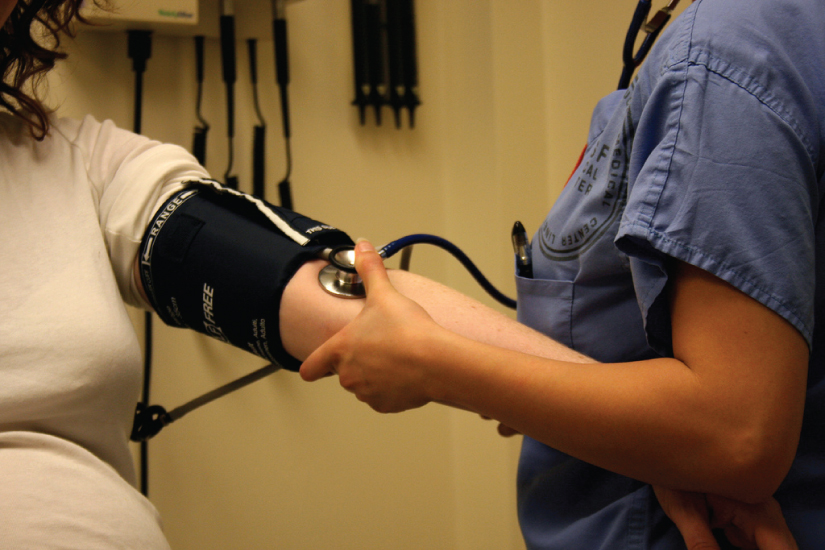
|

1.1 An introduction to the human body Read Online
1.2 The chemical level of organization Read Online

After studying this chapter, you will be able to:
Though you may approach a course in anatomy and physiology strictly as a requirement for your field of study, the knowledge you gain in this course will serve you well in many aspects of your life. An understanding of anatomy and physiology is not only fundamental to any career in the health professions, but it can also benefit your own health. Familiarity with the human body can help you make healthful choices and prompt you to take appropriate action when signs of illness arise. Your knowledge in this field will help you understand news about nutrition, medications, medical devices, and procedures and help you understand genetic or infectious diseases. At some point, everyone will have a problem with some aspect of his or her body and your knowledge can help you to be a better parent, spouse, partner, friend, colleague, or caregiver.
This chapter begins with an overview of anatomy and physiology and a preview of the body regions and functions. It then covers the characteristics of life and how the body works to maintain stable conditions. It introduces a set of standard terms for body structures and for planes and positions in the body that will serve as a foundation for more comprehensive information covered later in the text. It ends with examples of medical imaging used to see inside the living body.
Question: Type II pneumocytes have regenerative capacity. True/False
Choices:
True
False
Question: Which of the following statements is FALSE regarding bronchopneumonia?
Choices:
Bronchopneumonia lesions are centered around bronchioles in a lobular pattern.
Bronchopneumonia often develops when animals are exposed to high numbers of virulent organisms and defenses are impaired.
Bronchopneumonia is caused by air borne insults, mostly inhaled bacteria which cause suppurative inflammation.
Bronchopneumonia is caused by bacteria or endotoxin delivered to lung via bloodstream
Bronchopneumonia has anterior- ventral distribution pattern with affected areas consolidated and firm.
Question: BRSV infection is an example of what type of pneumonia?
Choices:
Bronchopneumonia
Interstitial pneumonia
Bronchointerstitial pneumonia
Question: Humoral immunity is based on __________ in upper respiratory and ___________ in lower respiratory system.
Choices:
IgG, IgA
IgA, IgG
IgM, IgA
IgA, IgM
IgE, IgA
Question: Type I pneumocytes have regenerative capacity. True/False
Choices:
True
False
Question: For airway defenses particles become trapped in mucus and gases are dissolved in mucus. _____________ particles are deposited on mucus membranes in turbinates. ____________particles often are deposited at bronchial - alveolar junctions.
Choices:
Smaller; Larger
Larger, Smaller
Question: Purulent exudate is made up of what kind of cells?
Choices:
Neutrophil
Macrophages
Type I pneumocyte
Eosinophils
Mast Cell
Question: __________________ is the main defense mechanism of alveoli.
Choices:
Neutrophils
Type I Alveolar epithelial cells
Macrophages
Type II Alveolar Epithelial cells
Mast Cells
Question: Which of the following is FALSE regarding interstitial pneumonia?
Choices:
Injury is in the alveolar walls, involving capillaries and alveolar interstitium.
Interstitial pneumonia has patchy or diffuse distribution but not anterior ventral.
Septicemia can cause interstitial pneumonia
Lungs are rubbery , heavy, and non collapsing .
Interstitial pneumonia starts in bronchioles not alveoli.
Question: Macrophages usually indicate chronic conditions in the lungs. True/ False
Choices:
True
False
Question: Which of the following is FALSE regarding pulmonary edema?
Choices:
Increased osmotic pressure causes pulmonary edema.
Decreased osmotic pressure in blood causes pulmonary edema.
Pulmonary edema is described as heavy , wet lungs
Pulmonary edema develops when permeability of endothelial or epithelial cells increase
Pulmonary edema prevents efficient exchange of gases.